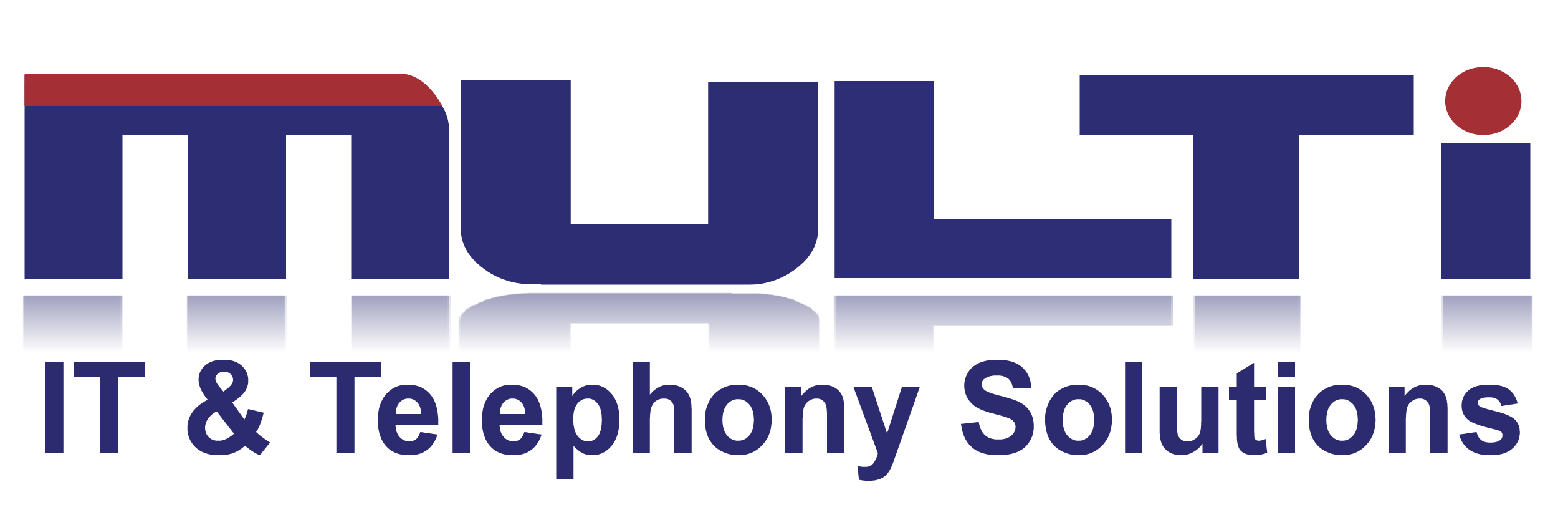Everybody is talking about the cloud, but the average business owner doesn’t really understand what that means. It’s the new and exciting thing, supposed to be super easy to use and inexpensive. However, it isn’t the answer to everyone’s problems, but that can be hard to understand when it comes so neatly packaged. After all, besides the cloud, how else can I access my data everywhere? In order to understand what all of the options are, we need to go back to the basics.
Let’s start with your IT environment. Depending on the size of your company, it can be incredibly complex or quite simple, but they all have similar pieces. In the past, all of these pieces had to live in your location. It was easy (or at least easier) to understand how it was all connected.
You installed software using a CD on your desktop computer. Your desktop computer was not mobile and you couldn’t sign onto anyone else’s computer in the office. It connected to other computers and the internet through a wired network and wired access in your office. Your data was stored on either your own desktop computer or the physical server in your office that you connected to through the wired network. That server was backed up onto a separate hard drive, again in your office. Everything was contained in your office and you could only access it from that one location.
As the internet has developed in power and speed, how we accomplish all of those same tasks has changed, purely because we are connected. We don’t need CDs to download software, you can download it from the company’s website. In fact, for most software programs now, you can’t even download the program to your computer or your server. You access it all directly from your internet browser. The software company keeps it on their servers. You also don’t need wires to connect you to the internet or your network. You don’t need your server to be located in your office. It can be in a data center halfway across the world. The same goes for your backup. Even your desktop can now be available to you on any computer because it is actually stored in the cloud. The cloud is the limit!
But really, what is the cloud?
When people think of “the cloud,” they often just picture their data floating somewhere. In a way, that is true, but what it doesn’t highlight is the physical infrastructure that still lives somewhere, just not in your office. Cloud computing is a network of physical servers located somewhere in the world connected to the Internet that manages your data, instead of a local server or computer. Your data, software, and even desktop can be stored somewhere other than your office and you can access it anywhere that you have internet. That’s the cloud.
But what people don’t often realise is now with the power of the internet you can also access the server in your office from anywhere too with the right technology. It is essentially your office’s own private cloud. What does that mean then? The conversation simply becomes about where is the most cost effective place for me to store my data. Cloud storage is like leasing a car and an on-premise server is like purchasing a car. Depending on the number of employees, the programs your business uses, and your budget, any number of cloud or on-premise solutions could make sense.
What’s best for my business?
Let’s say you’re a start-up just getting your feet wet. With the power of Office365 (a cloud solution for both software and storage), you can get up and running with all the basic tools you need for business – email, file storage and sharing, and the Microsoft Suite- with minimal upfront costs and a reasonable monthly fee. You can scale quickly, adding users as needed.
On the other hand, a large professional services firm requires serious horsepower because of their programs and number of employees. When it comes time to replace their infrastructure, it might be tempting to scrap it all and go to the cloud. There will be costs to make the transition to the cloud but nothing compared to the price tag on reinvesting in physical infrastructure. However, a cost analysis might show that the monthly costs of cloud storage end up being more than the cost of physical infrastructure spread out over the life of that equipment, especially if you end up using more cloud resources than you originally planned, overages can add up quickly. Again, it’s just like leasing a car versus buying one. Yes, if you buy a vehicle, you are responsible for the maintenance and upkeep but if taken well care of, the investment can save you money in the long run. But if you don’t want to make an upfront investment or you don’t want to be responsible for the upkeep, then leasing a car is the right option for you.
Ultimately, every business falls somewhere in between. Some pieces of your IT environment are better off in the cloud and some are better off on-premise. What you won’t find very often is an IT provider who is comfortable handling both. They are either cloud only, selling their particular solution with no real interest in finding what is best for your business or they only support your physical infrastructure. Here at Multi IT & Telephony Solutions, we’re comfortable with all of it. We understand the pros and cons and the associated costs so you can make the decision that is best for your business now and the future.
Want more from your IT provider? We know change is hard.
A conversation is a great place to start. Contact us to set up a call.
Get in touch with us online or on the details below:
Johannesburg – +27(0)11 435 0450, [email protected]
Cape Town – +27(0)21 879 1950, [email protected]
Durban – +27(0)31 331 0735, [email protected]
Namibia – +264(0)84 000 8310, [email protected]

